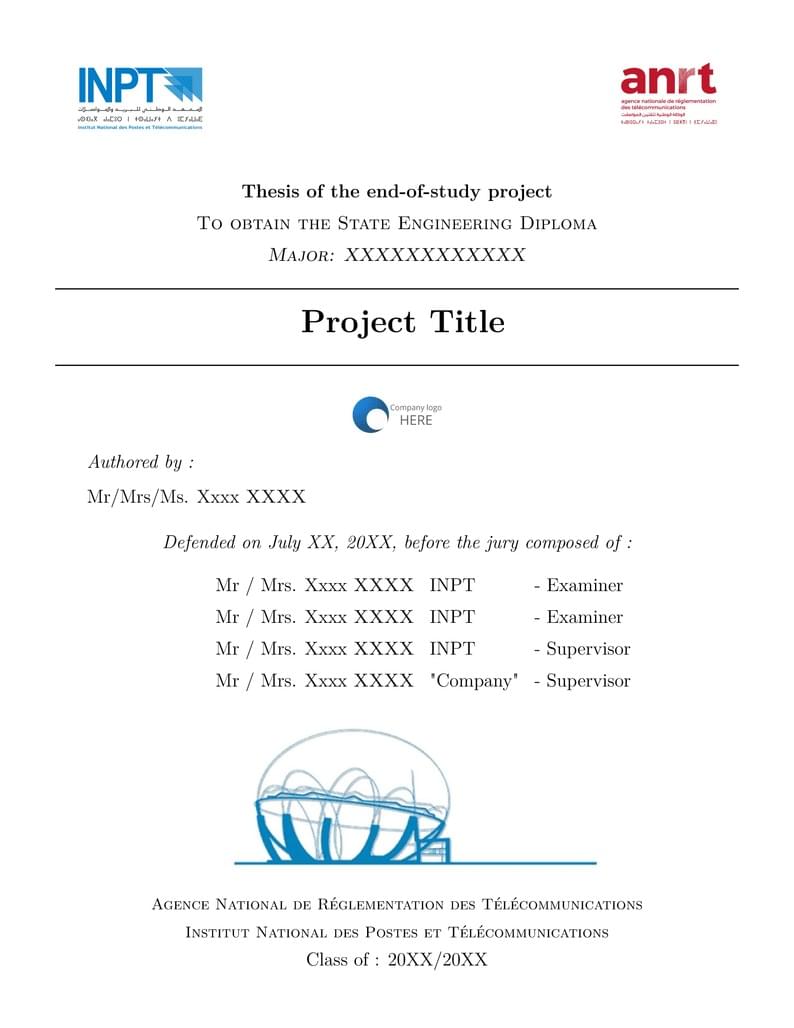
INPT PFE Report Template
Author:
Merieme El Yaagoubi
Last Updated:
2 years ago
License:
Creative Commons CC BY 4.0
Abstract:
PFE Report Template for INPT students.

\begin
Discover why over 20 million people worldwide trust Overleaf with their work.

\begin
Discover why over 20 million people worldwide trust Overleaf with their work.
%%%%%%%%%%%%%%%%%%%%%%%%%%%%%%%%%%%%%%%%%%%%%%%%%%%%%%%%%%%%%%%
%
% Welcome to Overleaf --- just edit your LaTeX on the left,
% and we'll compile it for you on the right. If you open the
% 'Share' menu, you can invite other users to edit at the same
% time. See www.overleaf.com/learn for more info. Enjoy!
%
%%%%%%%%%%%%%%%%%%%%%%%%%%%%%%%%%%%%%%%%%%%%%%%%%%%%%%%%%%%%%%%
\documentclass[12pt,a4paper,oneside]{book}
\input{Packages}
%\makenoidxglossaries
%\newglossaryentry{latex}
%{
% name=latex,
%description={Is a mark up language specially suited for scientific documents}
%}
%\selectlanguage{English}
\hypersetup{
colorlinks=true,
linkcolor=black,
filecolor=magenta,
urlcolor=cyan,
pdfauthor={Name}, %put your name here
pdftitle={PDF_TTILE}, %PDF title
pdfpagemode=FullScreen,
}
\begin{document}
\definecolor{codegreen}{rgb}{0,0.6,0}
\definecolor{codegray}{rgb}{0.5,0.5,0.5}
\definecolor{codepurple}{rgb}{0.58,0,0.82}
\definecolor{backcolour}{rgb}{0.95,0.95,0.92}
\lstdefinestyle{mystyle}{
backgroundcolor=\color{backcolour},
keywordstyle=\color{magenta},
numberstyle=\tiny\color{codegreen},
stringstyle=\color{codepurple},
basicstyle=\ttfamily\footnotesize,
breakatwhitespace=false,
breaklines=true,
captionpos=b,
keepspaces=true,
numbers=left,
numbersep=5pt,
showspaces=false,
showstringspaces=false,
showtabs=false,
tabsize=2
}
%\include{Frontmatter/Page_de_garde} %FRENCH ONE
\include{Frontmatter/Page_de_Garde_EN} % ENGLISH
\afterpage{\blankpage} %page vide obligatoire
\frontmatter
\input{Frontmatter/Dedication}
\input{Frontmatter/Acknowledgements}
\input{Frontmatter/Résumé}
% \cleardoublepage
%
\input{Frontmatter/Abstract}
% \cleardoublepage
%
\input{Frontmatter/Molakhas}
% \cleardoublepage
%
\listoffigures
\addcontentsline{toc}{chapter}{List of Figures}
%figures are added automatically here
\listoftables
\addcontentsline{toc}{chapter}{List of Tables}
%tables are added automatically here
\lstlistoflistings
\addcontentsline{toc}{chapter}{List of Listings}
%Code snippets are added automatically here
\tableofcontents
\addcontentsline{toc}{chapter}{Table of Contents}
%contents are added automatically here
\mainmatter
%debut of chapters
\input{Chapters/Chapter1}
\input{Chapters/Chapter2}
\input{Chapters/Chapter3}
\input{Chapters/Chapter4}
\input{Chapters/Chapter5}
\input{Chapters/Conclusion}
\appendix
\input{Endmatter/Glossary}
\input{Endmatter/Acronyms}
\input{Endmatter/ComplementaryCodes}
\begin{thebibliography}{99}
\addcontentsline{toc}{chapter}{Bibliography}
\bibitem{ref1}
Author name, Book name.
\bibitem{ref2}
\emph{Title 1},
\href{https://www.overleaf.com/learn/latex/Bibliography_management_with_bibtex}{\textbf{Title 2}}
%the link is a documentation of the basic bibliography method (that I'm using here) + bibTex which is more advanced, read it well and decide which one works best for you.
\end{thebibliography}
\end{document}